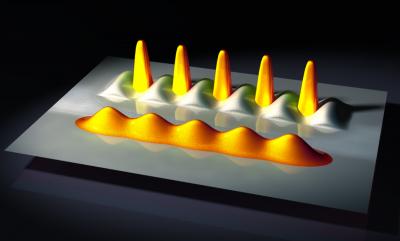Hard Condensed Matter Physics

Condensed matter physics is the study of the properties of matter at the scale of everyday experience, to paraphrase Nobel laureate Eugene Wigner. Condensed matter physicists are engaged in searching for the fundamental unifying concepts which can enable us to understand the cornucopia of fascinating, beautiful, and potentially useful phenomena which occur in matter at these macroscopic scales.
Through the application of powerful experimental probes and mathematical techniques, the experimentalists and theorists of the UCLA condensed matter physics group are playing leading roles in this endeavor.
In trying to understand the properties of matter, one must contend with the fact that matter is made up of a large number of microscopic consituents. As Einstein showed in his investigation of diffusion nearly 100 years ago, therein lie the secrets to many of the mysterious properties of matter. In considering such a perspective, one is immediately faced with such questions as why is a solid solid? If you open the door to a sauna and try to push against the steam which streams out, the water molecules near your hand will move out of the way, and your hand (and, eventually the rest of you) will be bathed in steam.
This is precisely what you would naively expect of a collection of molecules, each of which acts fairly independently of the others in moving around your hand. However, if you try the same thing with a block of ice, the whole block will move as one. How can this be? The answer is that the water molecules interact strongly with each other in order to form one highly correlated whole in which the oxygen and hydrogen atoms sit as the sites of a rather rigid lattice. The same is true of all crystaline solids. Such highly correlated states are said to be condensed; it is their study which is the subject of condensed matter physics.